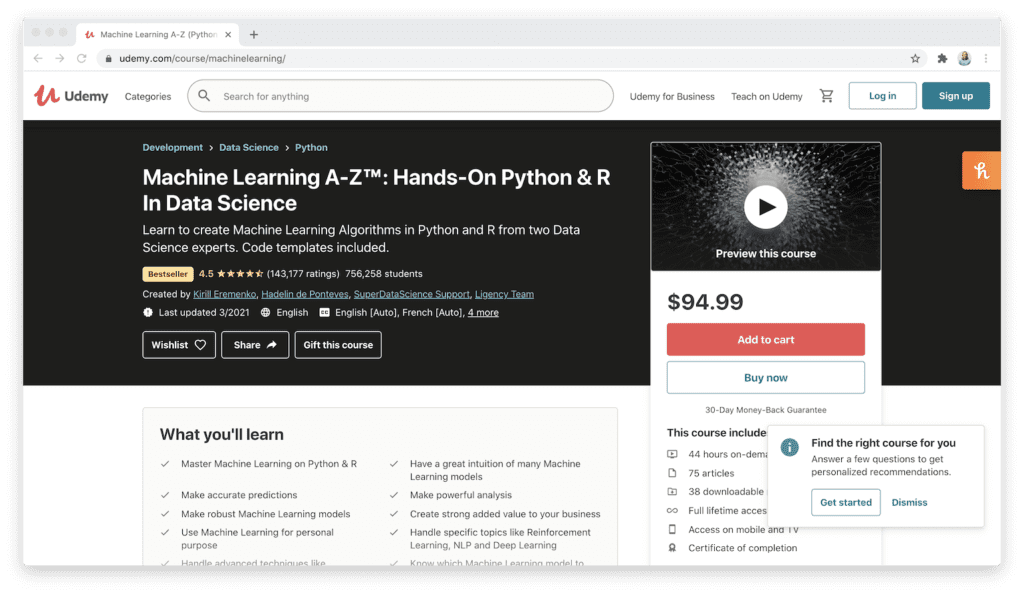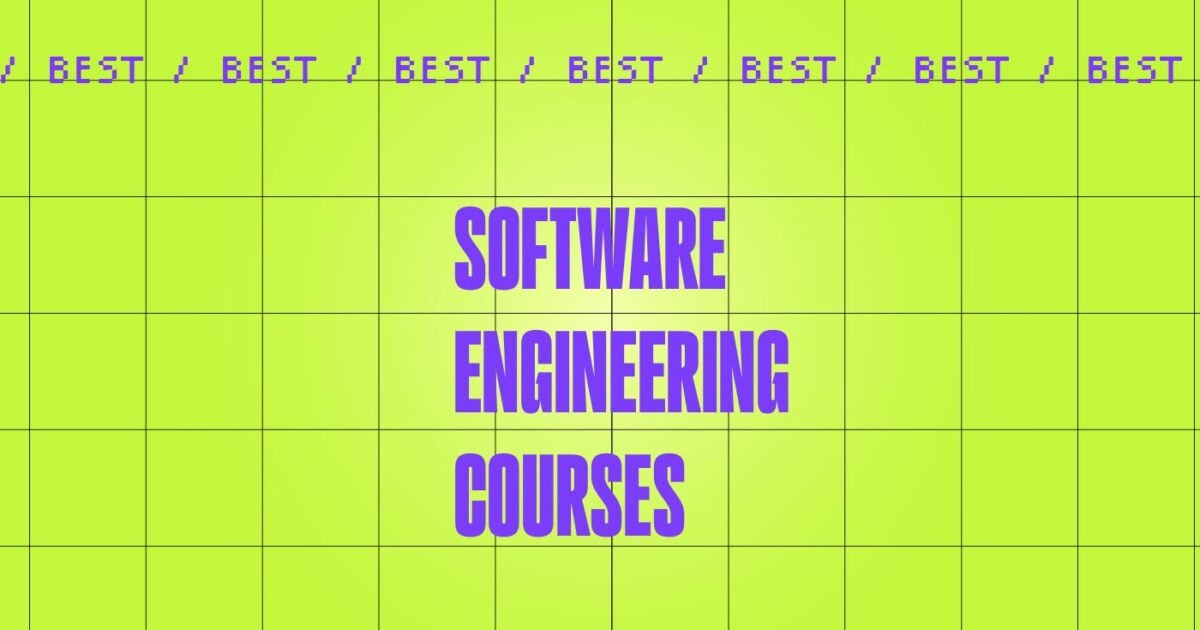All Categories
Featured
Table of Contents
- – The Top Machine Learning Careers For 2025 Stat...
- – Excitement About Machine Learning Engineer Course
- – Unknown Facts About What Do Machine Learning ...
- – 4 Easy Facts About Why I Took A Machine Learn...
- – Generative Ai For Software Development - Que...
- – Some Known Facts About Machine Learning In P...
You possibly recognize Santiago from his Twitter. On Twitter, on a daily basis, he shares a great deal of useful aspects of maker knowing. Many thanks, Santiago, for joining us today. Welcome. (2:39) Santiago: Thanks for inviting me. (3:16) Alexey: Prior to we go into our major subject of moving from software engineering to maker learning, maybe we can start with your background.
I began as a software designer. I mosted likely to college, got a computer science level, and I began developing software program. I believe it was 2015 when I determined to choose a Master's in computer science. Back then, I had no idea concerning machine understanding. I didn't have any interest in it.
I understand you have actually been using the term "transitioning from software engineering to artificial intelligence". I like the term "contributing to my ability the artificial intelligence abilities" much more because I assume if you're a software program designer, you are currently providing a great deal of worth. By incorporating device knowing now, you're boosting the impact that you can carry the sector.
Alexey: This comes back to one of your tweets or maybe it was from your program when you contrast two techniques to understanding. In this instance, it was some problem from Kaggle about this Titanic dataset, and you simply learn just how to fix this trouble utilizing a specific device, like choice trees from SciKit Learn.
The Top Machine Learning Careers For 2025 Statements
You first discover math, or direct algebra, calculus. Then when you recognize the mathematics, you most likely to artificial intelligence concept and you learn the theory. After that four years later, you finally involve applications, "Okay, just how do I make use of all these four years of mathematics to fix this Titanic issue?" Right? In the previous, you kind of save on your own some time, I believe.
If I have an electric outlet below that I need replacing, I don't want to go to college, invest 4 years comprehending the mathematics behind electrical power and the physics and all of that, simply to alter an electrical outlet. I would certainly rather begin with the electrical outlet and locate a YouTube video that aids me experience the trouble.
Poor analogy. However you understand, right? (27:22) Santiago: I really like the idea of starting with an issue, attempting to throw away what I recognize as much as that issue and comprehend why it doesn't function. Get hold of the tools that I need to address that problem and start excavating deeper and deeper and deeper from that point on.
To ensure that's what I normally advise. Alexey: Possibly we can speak a bit regarding learning resources. You mentioned in Kaggle there is an intro tutorial, where you can obtain and find out how to choose trees. At the start, before we started this interview, you discussed a couple of books also.
The only requirement for that training course is that you know a little of Python. If you're a designer, that's a fantastic starting point. (38:48) Santiago: If you're not a programmer, then I do have a pin on my Twitter account. If you go to my profile, the tweet that's going to be on the top, the one that claims "pinned tweet".
Excitement About Machine Learning Engineer Course

Even if you're not a designer, you can start with Python and work your means to more artificial intelligence. This roadmap is concentrated on Coursera, which is a platform that I truly, truly like. You can examine all of the programs for cost-free or you can pay for the Coursera membership to obtain certifications if you intend to.
Alexey: This comes back to one of your tweets or possibly it was from your course when you contrast two strategies to understanding. In this situation, it was some trouble from Kaggle concerning this Titanic dataset, and you simply find out exactly how to address this issue utilizing a certain device, like choice trees from SciKit Learn.

You initially learn mathematics, or direct algebra, calculus. When you know the math, you go to equipment learning concept and you find out the concept.
If I have an electric outlet right here that I need replacing, I don't wish to most likely to university, invest four years comprehending the mathematics behind power and the physics and all of that, just to change an outlet. I prefer to start with the outlet and locate a YouTube video clip that assists me go via the problem.
Negative analogy. You obtain the idea? (27:22) Santiago: I truly like the concept of starting with a trouble, trying to toss out what I understand approximately that problem and recognize why it doesn't work. Get the tools that I need to address that trouble and start excavating deeper and much deeper and much deeper from that point on.
That's what I typically suggest. Alexey: Perhaps we can chat a bit regarding discovering sources. You discussed in Kaggle there is an introduction tutorial, where you can get and find out how to choose trees. At the start, prior to we began this interview, you stated a couple of publications.
Unknown Facts About What Do Machine Learning Engineers Actually Do?
The only requirement for that training course is that you recognize a bit of Python. If you're a programmer, that's an excellent base. (38:48) Santiago: If you're not a developer, then I do have a pin on my Twitter account. If you go to my profile, the tweet that's mosting likely to be on the top, the one that says "pinned tweet".
Also if you're not a designer, you can begin with Python and work your way to more artificial intelligence. This roadmap is concentrated on Coursera, which is a system that I actually, actually like. You can audit every one of the training courses free of charge or you can pay for the Coursera membership to get certificates if you wish to.
4 Easy Facts About Why I Took A Machine Learning Course As A Software Engineer Described
That's what I would certainly do. Alexey: This comes back to one of your tweets or possibly it was from your course when you contrast two approaches to understanding. One technique is the issue based strategy, which you just talked around. You find a trouble. In this situation, it was some issue from Kaggle regarding this Titanic dataset, and you simply learn how to fix this issue using a specific device, like choice trees from SciKit Learn.

You first find out mathematics, or direct algebra, calculus. When you know the math, you go to equipment learning theory and you learn the theory.
If I have an electric outlet below that I need changing, I do not wish to most likely to university, invest four years understanding the mathematics behind electricity and the physics and all of that, simply to change an electrical outlet. I prefer to begin with the electrical outlet and find a YouTube video clip that aids me experience the issue.
Santiago: I really like the idea of beginning with an issue, attempting to throw out what I understand up to that issue and recognize why it doesn't function. Get the devices that I need to address that problem and start digging deeper and deeper and much deeper from that point on.
Alexey: Maybe we can speak a little bit about finding out sources. You discussed in Kaggle there is an introduction tutorial, where you can obtain and learn exactly how to make decision trees.
Generative Ai For Software Development - Questions
The only need for that course is that you recognize a bit of Python. If you're a designer, that's an excellent base. (38:48) Santiago: If you're not a programmer, after that I do have a pin on my Twitter account. If you go to my profile, the tweet that's going to get on the top, the one that states "pinned tweet".
Also if you're not a developer, you can start with Python and function your means to even more artificial intelligence. This roadmap is concentrated on Coursera, which is a system that I really, really like. You can investigate all of the programs for totally free or you can pay for the Coursera subscription to obtain certifications if you wish to.
Alexey: This comes back to one of your tweets or perhaps it was from your program when you contrast two techniques to understanding. In this instance, it was some problem from Kaggle regarding this Titanic dataset, and you simply learn exactly how to resolve this problem utilizing a specific device, like choice trees from SciKit Learn.
You initially find out math, or linear algebra, calculus. When you know the mathematics, you go to machine knowing theory and you find out the theory.
Some Known Facts About Machine Learning In Production.
If I have an electrical outlet here that I require replacing, I do not want to most likely to university, invest four years comprehending the math behind electrical energy and the physics and all of that, just to transform an outlet. I would certainly rather begin with the electrical outlet and discover a YouTube video clip that assists me go via the issue.
Bad analogy. You obtain the concept? (27:22) Santiago: I actually like the idea of starting with an issue, trying to toss out what I understand up to that trouble and understand why it doesn't function. Grab the tools that I require to fix that problem and begin digging deeper and much deeper and deeper from that factor on.
Alexey: Maybe we can speak a little bit regarding learning resources. You pointed out in Kaggle there is an intro tutorial, where you can get and discover just how to make decision trees.
The only demand for that program is that you know a little bit of Python. If you go to my account, the tweet that's going to be on the top, the one that says "pinned tweet".
Also if you're not a programmer, you can start with Python and work your means to even more maker learning. This roadmap is concentrated on Coursera, which is a system that I really, truly like. You can examine all of the courses for cost-free or you can pay for the Coursera registration to get certifications if you want to.
Table of Contents
- – The Top Machine Learning Careers For 2025 Stat...
- – Excitement About Machine Learning Engineer Course
- – Unknown Facts About What Do Machine Learning ...
- – 4 Easy Facts About Why I Took A Machine Learn...
- – Generative Ai For Software Development - Que...
- – Some Known Facts About Machine Learning In P...
Latest Posts
The Ultimate Software Engineer Interview Prep Guide – 2025 Edition
9 Software Engineer Interview Questions You Should Be Ready For
The Easy Way To Prepare For Software Engineering Interviews – A Beginner’s Guide
More
Latest Posts
The Ultimate Software Engineer Interview Prep Guide – 2025 Edition
9 Software Engineer Interview Questions You Should Be Ready For
The Easy Way To Prepare For Software Engineering Interviews – A Beginner’s Guide